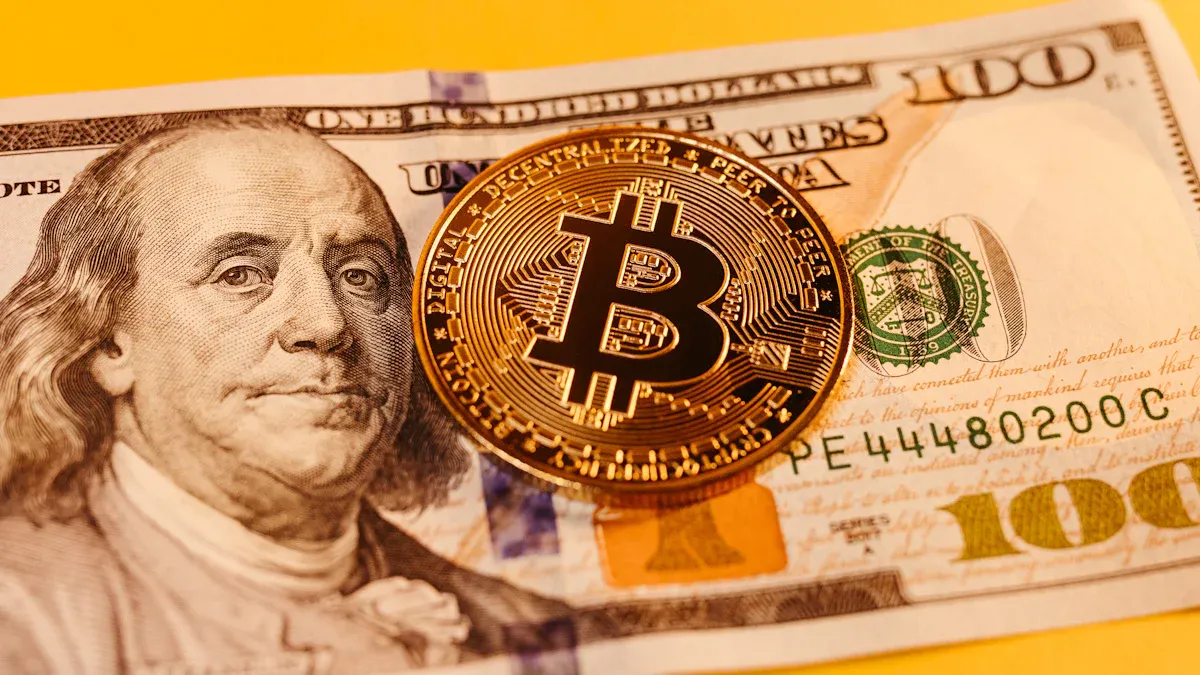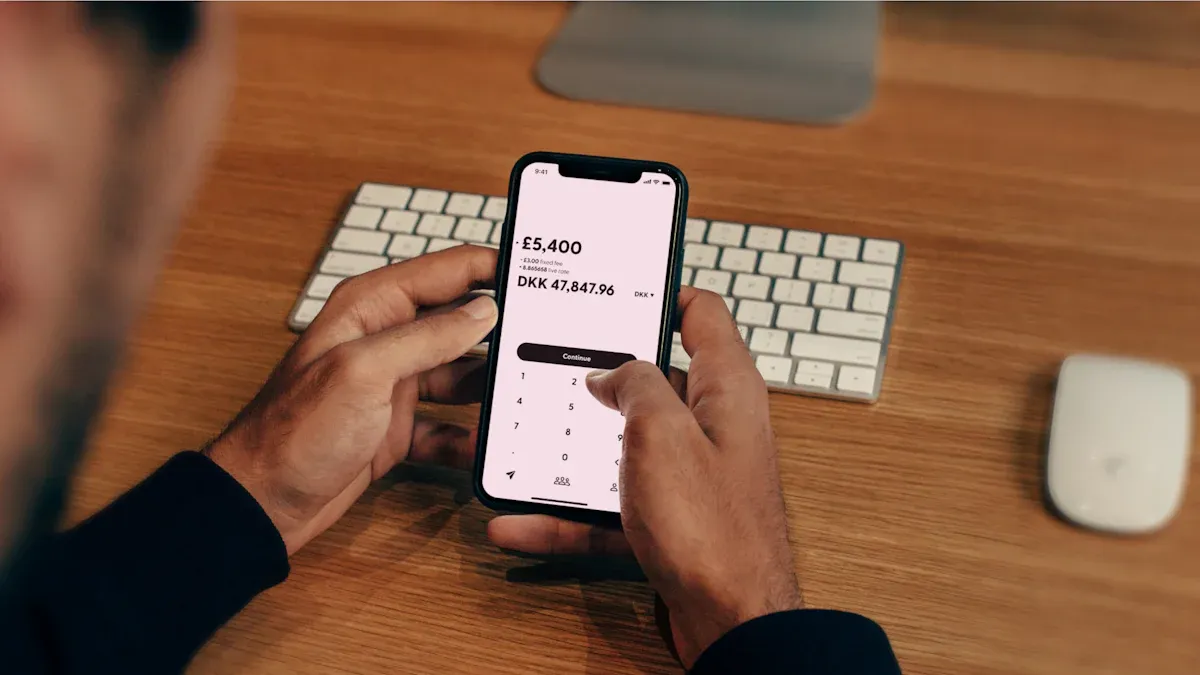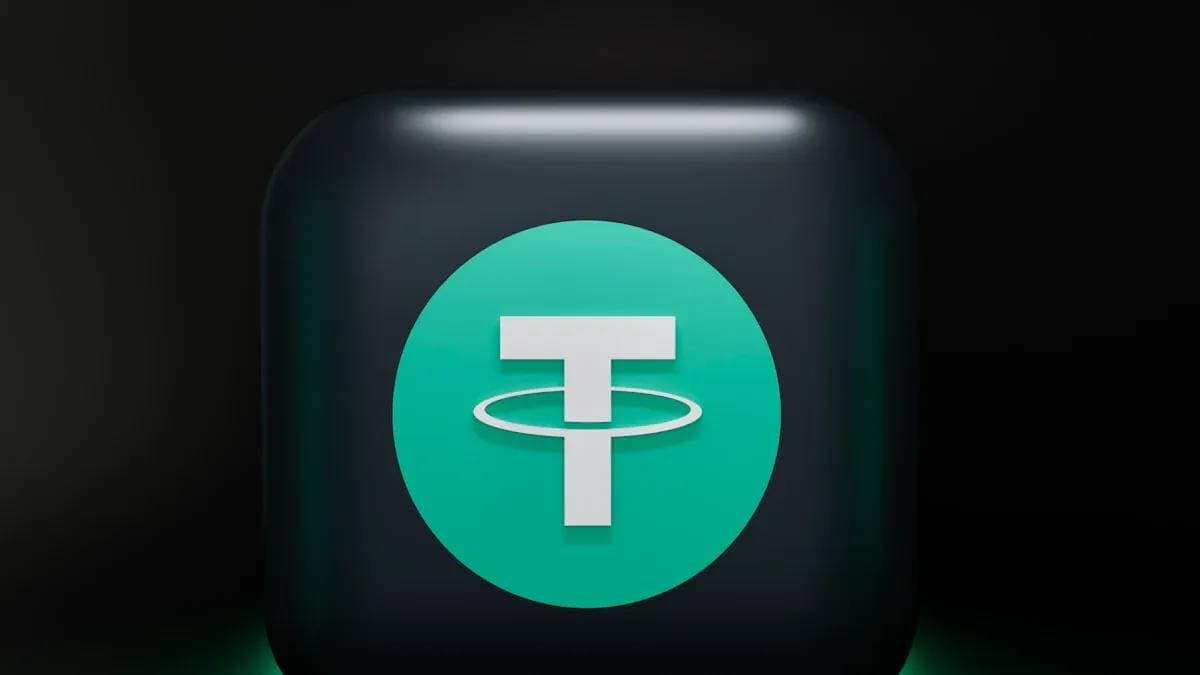- EasyCard
- Trade
- Help
- Announcement
- Academy
- SWIFT Code
- Iban Number
- Referral
- Customer Service
- Blog
- Creator
USDT International Transfer Beginner Guide: How to Find the Most Cost-Effective Remittance Path

Image Source: pexels
Are you tired of the long waits and high fees of traditional international remittances? Stablecoin USDT international transfers offer an efficient solution. Using networks like TRC-20, transactions are usually confirmed in under one minute, letting you say goodbye to days of waiting. However, to truly achieve the lowest cost, you need to carefully calculate the “total cost.” This fee combines network fees, platform handling fees, and potential exchange rate spreads.
Key Takeaways
- USDT transfers are faster and cheaper than traditional remittances, but calculate total cost, including network fees, platform fees, and exchange spreads.
- Choosing the right transfer channel is important: use exchange withdrawals for large amounts, direct wallet transfers for small amounts, and OTC or exchange platforms for converting to fiat.
- TRC-20 and BEP-20 networks have low fees and are the preferred choice for transfers; ERC-20 network fees are high.
- Before transferring, carefully verify the receiving address and network type; choosing the wrong network can lead to fund loss.
- Use internal exchange transfers for zero fees, and transfer during non-congested network times to reduce wallet network fees.
Stablecoin USDT International Transfers: Comparison of Three Core Channels

Image Source: unsplash
Choosing the right transfer channel is key to reducing costs. Your transfer amount, frequency, and final receipt method determine which path suits you best. Below, we break down the three mainstream stablecoin USDT international transfer channels in detail to help you make an informed choice.
Exchange Withdrawal: Preferred for Large and High-Frequency Transfers
If you frequently make large transfers, centralized exchanges (CEX) are usually the most cost-effective choice.
- Cost Structure: The main cost of exchange withdrawals is the fixed “withdrawal fee” charged by the platform. This fee is typically a fixed amount of USDT, unrelated to your transfer size.
- Fee Examples: Withdrawal fees vary greatly across exchanges and networks. Choosing low-fee networks (like TRC-20 or BEP-20) can save you significant funds.
Exchange USDT Withdrawal Fee (TRC-20) USDT Withdrawal Fee (ERC-20) Binance Usually $1.00 (1 USDT) May reach $20.00 (20 USDT) KuCoin Usually $1.00 (1 USDT) May reach $10.00 (10 USDT) Tip: The table fees are examples only. Log into the exchange before transferring to check the latest real-time rates.
- Applicable Scenarios:
- Bulk Traders: When transferring tens of thousands or millions of dollars, a $1 fixed withdrawal fee is negligible, with clear cost advantages.
- High-Frequency Traders: For users making multiple daily transfers, the stable, low fixed fees effectively control total costs.
For small transfers, the fixed withdrawal fee may take a large portion of the total. For example, transferring $50 but paying $1 in fees results in a 2% cost rate. Therefore, consider other methods for small transfers.
Direct Wallet Transfer: Preferred for Small and Anonymous Transfers
If you want a small transfer with privacy emphasis, using a non-custodial wallet for direct transfer is ideal.
- Cost Structure: The only on-chain cost for direct wallet transfers is the “network fee” (Gas Fee) paid to network miners. You pay no fees to any platform.
- Fee Examples: Network fees vary by blockchain.
- TRC-20 (Tron): Extremely low, usually $1.00 - $2.00, depending on network energy and bandwidth.
- BEP-20 (BNB Smart Chain): Also very low, generally about $0.01.
- ERC-20 (Ethereum): Highest, from a few dollars to tens, especially during congestion.
- Applicable Scenarios and Wallet Recommendations:
- Small Transfers: With only low network fees, ideal for tens to hundreds of dollars.
- Privacy Focus: Using wallets like Exodus, no identity verification (KYC) needed to create and use. You hold the private key for true anonymity and asset control. For maximum security, consider hardware wallets like Ledger or Trezor.
Note: With direct wallet transfers, you’re fully responsible for asset security. Securely store your private key or seed phrase and never share with anyone.
OTC and Exchange Platforms: Bridge for Fiat In/Out
When you finally need to convert USDT to fiat like USD and deposit into a bank account, OTC (over-the-counter) or third-party exchange platforms become the necessary bridge. This is the most complex cost part of the entire stablecoin USDT international transfer process.
- Cost Structure: Total costs on these platforms are usually hidden, consisting of two parts:
platform service fee + exchange spread. You may not see a clear fee item but receive less fiat than market rate. - Operational Path Case Analysis: Using BiyaPay as an example, a typical process is:
- Transfer USDT to your BiyaPay account.
- Convert USDT to USD in-platform. This incurs spread and possible conversion fees.
- Withdraw platform USD via Wise or wire to your licensed Hong Kong bank account. This incurs withdrawal fees.
Total Cost Calculation Reminder Not all stablecoin channels are absolutely cheap. Before using OTC or exchange platforms, do a full cost estimate. Calculate: starting with 1,000 USDT, how much USD do you receive after all steps? Compare this to direct Wise or similar traditional remittance arrival amounts, choosing the one netting more money.
Low-Cost Transfer Practice: From Selection to Completion

Image Source: unsplash
You’ve grasped the theory; now enter practical operations. Follow these steps for an easy low-cost stablecoin USDT international transfer. This is like planning a trip—choosing the right route and transport is crucial.
Choose the Right Network: Cost Advantages of TRC-20 and BEP-20
Selecting the transfer network is the first and most critical cost-determining step. Think of different blockchain networks as highways—some expensive, others economical.
- Why Are TRC-20 and BEP-20 Cheaper? Ethereum (ERC-20) is like a busy downtown road with high traffic, leading to very high “toll fees” (Gas Fee). In contrast, Tron (TRC-20) and BNB Smart Chain (BEP-20) use different architectures for higher transaction efficiency and less congestion, thus far lower fees than ERC-20. An ERC-20 transfer may cost tens of dollars, while TRC-20 or BEP-20 usually needs $1-$2 or less.
- Pre-Transfer Preparations When using direct wallet transfers, prepare a small amount of the network’s native token for Gas fees.
- TRC-20 Transfer: Need a small amount of TRX in your wallet.
- BEP-20 Transfer: Need a small amount of BNB in your wallet.
Important Tip: Verify Network During withdrawal, ensure the selected network exactly matches the receiving address’s network type. For example, many exchanges like Poloniex require:
- If entering a USDT-TRON address, must select TRC20 network.
- If entering a USDT-BEP20 address, must select BEP20 network. Wrong network directly causes permanent fund loss.
Choose the Right Platform: Exchange vs Wallet Decision
Choosing exchange or wallet depends on your preference for fund control, privacy, and convenience.
The table below clearly shows core differences:
| Feature | Centralized Exchange (CEX) | Non-Custodial Wallet |
|---|---|---|
| Private Key Control | Third-party (exchange) holds | You hold |
| Security Risk | Centralized attack risk on platform | Personal mismanagement risk |
| Privacy Protection | Usually requires KYC | Can be used anonymously |
| Fund Access | Depends on platform, may be frozen | Always accessible |
| Control | Limited, you’re a platform user | Full ownership |
- When to Choose Exchange? If unfamiliar with network security or want customer support, exchanges are more convenient. Entrusting assets to professionals avoids private key management. Note exchanges usually have withdrawal limits tied to your KYC level.
For large transfers, complete platform verification in advance.Exchange Account Type Daily Withdrawal Limit (Crypto Equivalent) Binance No KYC ~0.06 BTC Binance With KYC ~100 BTC Kraken Unverified (Level 1) ~2 BTC - When to Choose Wallet? If seeking absolute asset control and high privacy, non-custodial wallets are the best. You own the private key, truly owning the assets. No personal info needed for transactions. Of course, this requires security knowledge and full responsibility.
Practical Demo: Exchange Withdrawal via TRC-20 Example
Below, using the world’s largest user base Binance exchange as example, we demo withdrawing USDT via the lowest-cost TRC-20 network. This process usually takes just 4 simple steps.
- Access Your Asset Wallet Log into your Binance account, navigate to top-right “Assets” menu, then click “Asset Overview”.
- Initiate Withdrawal Request
- Click “Withdraw” on the asset page.
- Select “Withdraw Crypto,” then choose “USDT” from the coin list.
- Now paste your receiving wallet address.
- In “Transfer Network,” must select “TRC20 (TRON)”. You’ll see the fee usually only $1.
- Enter the withdrawal amount (minimum 10 USDT).
- Verify Info and Confirm Carefully check entered address, network, amount. If correct, click “Withdraw,” then “Continue”.
- Complete Security Verification Per account settings, enter Google Authenticator 6-digit code and email verification code. After verification, withdrawal request is submitted. Usually within minutes, funds appear in your target wallet.
⚠️ Transfer Failed? Check These Common Errors! Newbies often make “[withdraw to wrong network type](https://support.cex.io/en/articles/4383409-crypto-withdrawals-troub troubleshooting-tips)”. For example, sending TRC-20 USDT to an Ethereum (ERC-20) address starting with “0x”. This causes on-chain rejection (shown as “FAIL-TRANSACTION REVERT”), funds stuck or lost.
How to Avoid:
- Check Address Format: TRC-20 addresses usually start with uppercase “T”. ERC-20 and BEP-20 start with “0x”.
- Double Confirmation: Before “Confirm,” re-verify receiving address and selected network match.
Advanced Money-Saving Tips: Achieve Zero Fees and Lowest Costs
You’ve mastered basics for low-cost networks and platforms. Now explore two advanced tips to minimize transfer costs, even to zero fees.
Tip 1: Use Internal Exchange Transfers for Zero Fees
If you and the recipient use the same centralized exchange (e.g., both Binance users), use the “internal transfer” function for completely free and instant arrival.
This transfer skips the blockchain, like internal bank account debit—merely a database change in the exchange. Thus, no network or platform fees.
Operation steps are usually very simple:
- On exchange withdrawal page, select USDT.
- Choose “Transfer via Email/Phone/UID” option.
- Enter recipient’s same-platform account info (like UID) and amount.
- After security verification, funds instantly appear in recipient’s account.
Core Advantages: Zero fees, real-time arrival. Optimal for small high-frequency transfers between friends or business partners, provided both on same platform.
Tip 2: Time Transfers to Avoid Network Congestion
When on-chain wallet transfers are necessary, network fee (Gas Fee) is the main cost. This fee isn’t fixed—it fluctuates like peak-hour tolls based on network busyness. Transferring during congestion can multiply fees several times.
Use tools to monitor network status and transfer during “off-peak” for lower network fees.
- Monitor TRON (TRC-20) Network: Use sites like GasFeesNow.com to estimate real-time TRC-20 fees. Since fees tie to TRX USD price, transferring when TRX is low may also be cheaper.
- Monitor BNB Smart Chain (BEP-20) Network: BscScan Gas Tracker is a powerful official tool. It shows real-time Gas prices and utilization to judge network busyness.
Operation Suggestion: Before wallet transfer, spend a minute checking these tools. If high utilization or Gas fees, wait 1-2 hours—this may save considerable fees.
You’ve now mastered core tips. For most, withdrawing USDT via exchanges supporting TRC-20 or BEP-20 networks is the best cost-efficiency balance.
Completing a successful stablecoin USDT international transfer hinges on final checks. Follow this checklist:
- Confirm Network: Ensure chosen network (e.g., TRC20) matches receiving address’s network.
- Check Address: Carefully verify receiving address, especially first (e.g., TRC-20 starts with “T”) and last characters.
- Verify Fees: Check platform handling fee and estimated network fee (Gas Fee).
- Confirm Amount: Finally check withdrawal amount and actual arrival amount.
FAQ
What if I send USDT to the wrong address?
Blockchain transfers cannot be reversed. Sending USDT to a wrong address or mismatched network likely means permanent loss.
Think Thrice Before Transfer Before “Send,” repeatedly verify receiving address and network type. This is the most important step to protect your assets.
How long do USDT transfers usually take?
Transfer speed depends on the chosen network.
- TRC-20 and BEP-20 Networks: Very fast, usually confirmed in 1 minute.
- ERC-20 Network: Slower, may take minutes to tens of minutes, depending on congestion.
Is holding and transferring USDT safe?
USDT’s value is pegged to USD, relatively stable. But your asset safety depends on how you store private keys or account passwords. Using non-custodial wallets and properly backing up seed phrases gives you full control and highest security.
Is there a minimum amount for USDT transfers?
This depends on the platform used.
| Platform Type | Minimum Amount Limit |
|---|---|
| Centralized Exchange | Usually has minimum withdrawal, e.g., 10 USDT. |
| Non-Custodial Wallet | No minimum transfer limit, but need enough native token for network fee. |
*This article is provided for general information purposes and does not constitute legal, tax or other professional advice from BiyaPay or its subsidiaries and its affiliates, and it is not intended as a substitute for obtaining advice from a financial advisor or any other professional.
We make no representations, warranties or warranties, express or implied, as to the accuracy, completeness or timeliness of the contents of this publication.




Contact Us
Company and Team
BiyaPay Products
Customer Services
BIYA GLOBAL LLC is a licensed entity registered with the U.S. Securities and Exchange Commission (SEC No.: 802-127417); a certified member of the Financial Industry Regulatory Authority (FINRA) (Central Registration Depository CRD No.: 325027); regulated by the Financial Industry Regulatory Authority (FINRA) and the U.S. Securities and Exchange Commission (SEC).
BIYA GLOBAL LLC is registered with the Financial Crimes Enforcement Network (FinCEN), an agency under the U.S. Department of the Treasury, as a Money Services Business (MSB), with registration number 31000218637349, and regulated by the Financial Crimes Enforcement Network (FinCEN).
BIYA GLOBAL LIMITED is a registered Financial Service Provider (FSP) in New Zealand, with registration number FSP1007221, and is also a registered member of the Financial Services Complaints Limited (FSCL), an independent dispute resolution scheme in New Zealand.




















